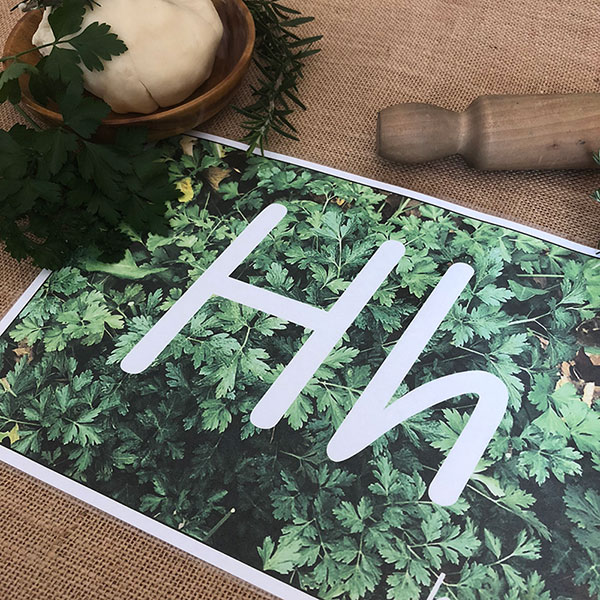How to Teach Phonics with Play Dough
Playdough is always a favourite in my classroom. It's ideal to use that interest for reinforcing educational skills and concepts. That’s the beauty of a play-based classroom. You can teach phonics and consolidate phonemic skills through the provocations and learning invitations you provide.
Playdough is a wonderful sensory experience. When you stimulate any of the 5 senses (seeing, touching, smelling, tasting or hearing) you are helping the brain to develop. When you ignite the senses of children, neural pathways are created in the brain. Current brain research suggests that sensory learning experiences will help children to LEARN more and RETAIN more too.
How to teach phonics with playdough?
Play dough by itself stimulates the sense of touch. Adding an essential oil to play dough will ignite the sense of smell. Now 2 senses are being stimulated and those neural pathways in the brain are being created. If you want to teach or reinforce a phonics concept, add a phonics stimulus to the mix. The first phonics stimulus I always add is an alphabet play dough mat. This is how I teach alphabet letter symbols with playdough. Allow the children to feel the letters as they squeeze, roll and bend the playdough. They will be creating and accessing brain pathways through their sense of touch, smell and sight. When they form letters with the playdough you will be teaching phonic concepts they will remember.
The senses, being explorers of the world, open the way to knowledge. Our apparatus for educating the senses offers the child a key to guide his explorations of the world, they cast a light upon it which makes visible to him more things in greater detail than he could see in the dark, or uneducated state. (Maria Montessori: The Absorbent Mind)
I like to add props to my playdough table. This enhances the sensory learning experience even further. I use the props to teach and reinforces our focus letter sound. This is how to teach phonics with playdough.
For some information on phonological awareness or phonemic awareness, and how they relate to the teaching of phonics, please read this blog post.
Adding props to the play dough also develops more creative and critical thinking. The children will experiment and problem solve with the play dough and the props. Adding some well-planned and thoughtful props transforms a simple play dough experience into a learning provocation. You will also have the bonus of extending their oral language as they discuss the new props.
Choose props to match your phonics focus
As I already mentioned, the first prop I add to the play dough is one of my phonics playdough mats. I carefully designed each mat with a phonics theme in mind. For instance, when I use the /Hh/ mat with the beautiful image of herbs as the background, I also add either a vase of cut herbs or a small herb plant to the play dough provocation. The children’s fine motor skills can be further developed by adding scissors to cut some of the herbs. These cut herbs can be added to their playdough. Their sense of smell is awakened as they smell the cut and crushed herbs.
This learning provocation now encourages
open ended creative play
critical thinking and problem solving
extensive vocabulary development
added sensory stimulation
further development of fine motor skills
We all know how important revision and practice is in learning. You can’t teach a child once and expect them to have learnt the new letter and its corresponding sound. A new phonics concept needs to have exposure numerous times. It needs to be included in many diverse sensory experiences. The greater the number of opportunities, the stronger the brain and memory can connect, learn and remember. The more varied the opportunities, the stronger the brain and memory can connect, learn and remember.
How I teach phonics in my classroom
At my school, we teach phonics using The Jolly Phonics Program. At the beginning of the Prep year we focus on 3 sounds over 2 weeks. I explicitly teach each letter, sound and action. Then the children practice and revise these concepts during our investigation time. The play dough table is just one place in my room where they can do this.
Using my play dough phonics mats and related phonemic props to teach phonics means I need to change the play dough table around quite regularly. It’s very easy to create a new learning experience with little effort. To introduce a brand-new provocation, all I need to do is swap the mat and a few props. The new props bring new learning opportunities. Oh, and the minute you add something new to an area, I can guarantee they’ll be lining up to get there.
By providing students with materials that they can physically manipulate, play with and explore, teachers help them learn more about the world and develop crucial skills that they will utilize later in life. (Caitrin Blake, Concordia University Nebraska)
The letters featured in my mats are in Queensland Beginners Font. You might like to have these beautiful mats in your classroom to help you teach phonics at your play dough table. The pack contains 40 mats in A4 size. They each have an authentic photograph background reflecting the associated phoneme. Every 26 letters of the alphabet are represented at least once. There are two mats for each vowel, with both the long and short vowel sounds included. For repeated use, be sure to laminate the mats or slide them into a sheet protector before using them.
Everything we know about the world and ourselves has come through our senses (Bogdashina, Sensory Perceptual Issues in Autism and Asperger Syndrome)
I tend to make one batch of play dough each term. You will love my favourite play dough recipe. It lasts for ages and doesn’t need refrigeration. You can find it here.




